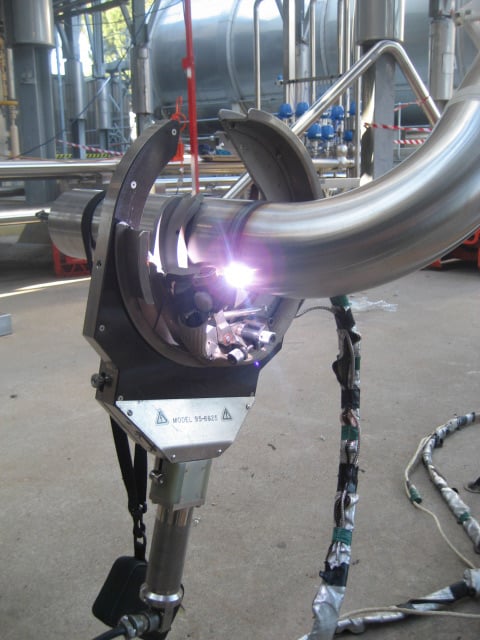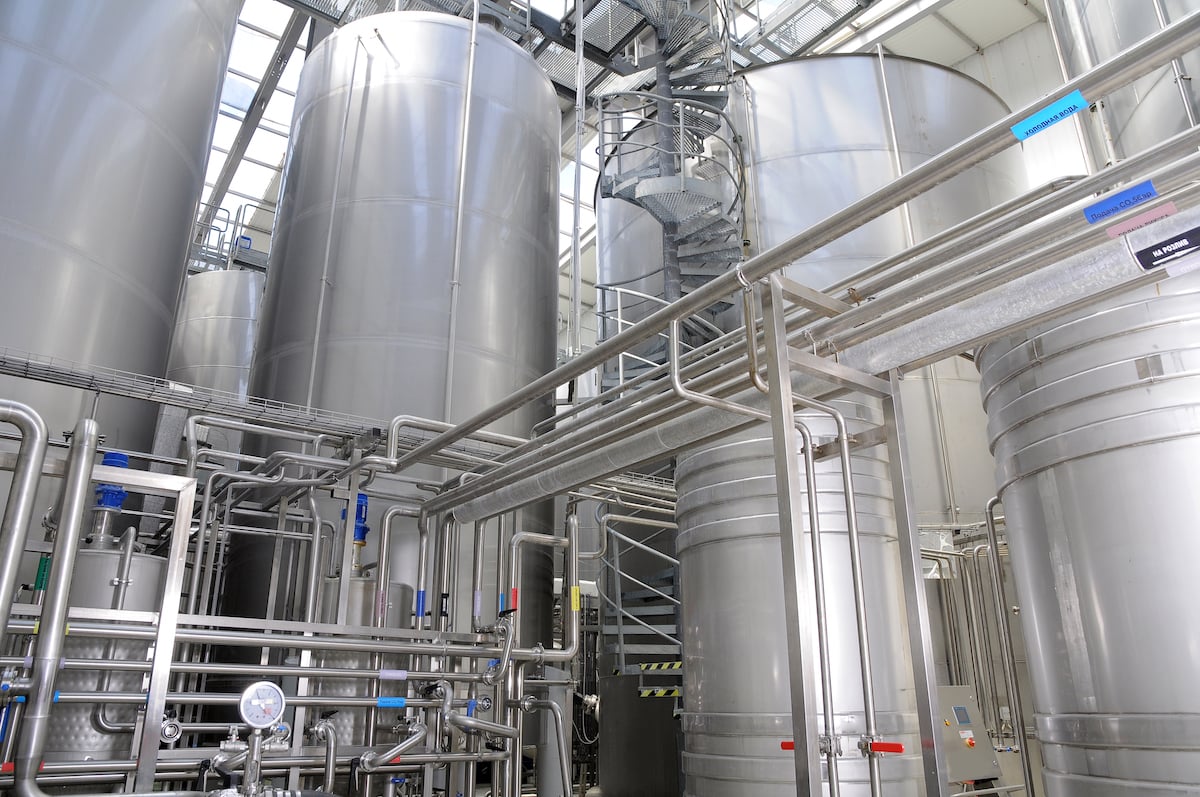Orbital Welding – The Best Solution for Joining Tubes and Pipes.
Our third welding processes and applications tutorial brings us to a more specialist area – orbital welding. Tom our welding instructor gives an introduction, advising Paul on some of the key elements of the process.
Updated 08/04/2025
Key Takeaways:
-
Orbital welding has become the accepted method of producing high-quality joints in pipes.
-
The orbital welding produces a high-quality weld in overhead and down hand positions. Often in situations of restricted access.
-
Benefits of orbital welding include achieving high weld quality on a repetitive basis. Particularly on small diameter pipes and tubes. It’s ability to perform in situations of difficult access are also key. Especially applications where weld quality is of utmost importance.
-
Tube orbital welding often utilises the Gas Tungsten Arc Welding (GTAW) or TIG process. The TIG welding power source provides and controls the pre-set welding parameters. According to a specific welding programme created and/or stored for each job. In this way, a repeatable weld is produced every time. As well as controlling the welding parameters, the power source provides the power to drive the welding head. It also switches the shielding gas or gases on or off as required.
-
Orbital welding limitations only include those associated with equipment maintenance. Providing appropriate weld trials are undertaken. This proves welding details and ensures correct programme set up before starting the job.
Contents:
-
Introduction to orbital welding
-
Orbital welding uses
-
Orbital welding equipment
-
Shielding gases for orbital welding
-
Weld purging
-
Preparing the joint
-
Orbital welding advantages
-
Applications of orbital welding
-
Orbital welding limitations
- Conclusion
Q & A Guide to Orbital Welding
-
Tom: Today we are going to look at a more specialised process. But one that produces very high-quality welds, repeatably. What do you think we mean when we talk about orbital welding?
Paul: Are we talking about a process where welding is carried out on tubes and pipes? Which must be more difficult than the normal fabrication that we have discussed so far.
Tom: You are right. Orbital welding originated some 50 years ago, during attempts to solve problems while fabricating the X-15 rocket research plane. Issues like poor quality, leaking welds. Over time, it has become the accepted method of producing very high-quality joints in pipe and tube. Newer welding equipment was developed that offered portable combination power supply. As well as a computer control system that operated from 110V AC. The advantage being they could now be used on site as opposed to only in a major workshop.
-
Paul: Why do you need to go down this route?
Tom: It is difficult when dealing with small pipes, to produce a high-quality weld in overhead and down hand positions. Especially in situations of restricted access. The answer to routinely producing high quality welds on tubes and pipes is to maintain a good balance between gravitational force and the surface tension of the molten weld metal. Using TIG orbital welding, these problems are overcome with enclosed welding heads on a 100% repeatable basis.

-
Paul: Is the equipment a lot more complicated and, hence more expensive?
Tom: Orbital welding commonly utilises the TIG welding process. Which we talked about when we discussed welding of stainless steel. However orbital MIG welding is sometimes used for larger diameter pipes. The main components of a TIG orbital welding system are:
-
Paul: Obviously, pipes and tubes come in a variety of metals. What shielding gas is used?
Tom: Pure argon with a purity level of 99.995% (known as 4.5, i.e., “four nines five”) is most common. Unless you need to weld the more “delicate” metals, such as titanium, tantalum, zirconium, and their alloys. These need a purity of 4.8, i.e., 99.998%. If you need to increase the weld energy, 2-5% of hydrogen can be mixed with argon. As well as increasing the heat input by 10-20%, this gas mixture offers better penetration and faster welding speeds. Mixtures like this can also help to protect the molten weld metal from any oxygen.
However, it’s not that simple. If welding mild and carbon steel tubes, these metals absorb hydrogen, leading to possible porosity and cold cracking. So hydrogen mixtures are not recommended for these metals. While for aluminium and titanium welding, the admixture of hydrogen is strictly forbidden.
Paul: So, what would you use in these cases?
Tom. If you need to increase the weld energy, instead of hydrogen, you would add helium to the argon; needing 20%, 50%, 70% or even pure helium. Helium has no adverse effects on pure titanium or titanium alloys. There is one other problem area and that is Duplex or Super Duplex steels. In these cases, mixtures of argon, helium and nitrogen are used.
Paul: How does this work?
Tom: Unlike argon, helium is a good heat conductor. The arc voltage under helium is much higher than under argon. This greatly increases the energy content of the arc. It also makes the arc column wider, allowing deeper penetration. Helium is also applied for the welding of metals with high heat conductivity. Including the likes of copper, aluminium and light metal alloys. As helium is a lightweight gas compared to argon, you should increase it’s flow rate two to three times for identical gas coverage.
-
Paul: Is the shielding gas from the torch enough to protect the weld?
Tom: That’s a good question and I am glad you asked it. The need to provide protection of the weld underbead is often overlooked. Using inert gas purging techniques offers the best solution for this. The presence of oxygen, nitrogen, and other contaminants affect factors like appearance. As well as the join’s corrosion resistance and mechanical properties. Properly developed welding procedures address the issues by specifying weld purging. In most applications, even defining the purging equipment!
Paul: How does weld purging work?
Tom: At the very basic level, welders will often make plugs out of carboard discs. As you can imagine, this is neither a realistic nor practical solution. After all, how do you remove the cardboard after welding?
The correct way to do this is to use professional plugs that can be expanded to fit tightly into the tube. However, the same problem can arise with removing the plug on the far side of the weld without damaging the plug. Another answer is the use of rubber or silicone discs connected by a flexible tube. Developed specifically for the application, as they are simple to remove after welding. On very small diameter pipes, continuous inert gas flow through the pipe is often used to prevent problems.

-
Paul: So, we have chosen to use orbital welding, we know what metals we are welding, and we have the equipment, what next?
Tom: If we are looking at welding small diameter pipe and tube, the welding process is, as I mentioned earlier, autogenous orbital welding. That means that, in contrast to the situations we have looked at before, we do not add filler metal. It is therefore essential that you prepare the tube ends to provide a perfect fit. This ensures the pipe or tube is correctly located and fixed. The welding head is then fitted around the joint and clamped securely. If weld purging is being used, then this must be fitted before welding begins. Assuming that this is a job that has been done before, the operator will select the pre-set welding conditions and welding will begin. If it is a new job, then weld trials will have developed the necessary conditions for that job.
-
Paul: How would you summarise the advantages of orbital welding?
Tom: Orbital welding was developed to overcome the problems of achieving high weld quality on a repetitive basis. Working on small diameter pipes and tubes, particularly in situations of difficult access. And for applications where very high quality of welding is guaranteed. After all, the majority of applications for this process are in safety critical industries. The likes of pharmaceutical, food, beverage, nuclear and semiconductor sectors. All are particularly demanding of weld quality – where weld failure could be disastrous.
-
We have talked about welding of small diameter tubes and pipes – is this the only area of application?
Tom: For many years, stainless steel orbital welding was only applied to small diameters using closed heads. Gradually over the last 40 years or so, the potential for producing high quality welds consistently in larger diameters has improved. Orbital welding stainless steel pipe of varied diameters is now much more common. The orbital pipe welding process now features in applications like offshore rigs and pipelines. Here, much more complex welding heads constantly rotate around the pipe, adding filler material as they go. In this instance, both orbital TIG and MIG welding are utilised, depending on job requirements.
-
Paul: Are there many problems when carrying out orbital welding?
Tom: Providing trials are undertaken to establish and prove welding details, then the only problems that could arise are equipment-based.
The tungsten electrode – which is the key to the operation, should be checked and changed regularly. This ensures that the welding tip is in good shape. All welding cables and remote control cables should be regularly checked to avoid any accidents. As well as ensuring proper performance. The welding head and cooling unit should be cleaned out and checked periodically to avoid any blockages. Then as simple as it sounds, if welding is being supplied with gas from a cylinder, ensure that there is enough gas to complete the job.
You should also get the power source serviced and calibrated on a yearly basis. This ensures the accuracy required for this type of work. As well as maximising the service life of the equipment.
Conclusion
Tom: There we go, a good introduction to a vitally important welding process. We’ve learnt that orbital welding is widely used to produce critical tube and pipe welding joints. Benefits of orbital tube welding include repeatability, high weld quality. Plus, the ability to use the process in areas with difficult or restricted access. It takes some preparation and specialist equipment, but using orbital welding for hygienic or sanitary stainless steel pipe and tube welding offers the best solution.
I hope you found it interesting and I look forward to your next session.
If you want to find out more about the orbital welding process, the Tulsa Welding School in the USA has a great article, click here to take a look.
Now you know all about the process, if this is something you feel will benefit your business then you will need some equipment! We have a wide range of orbital welding machines for sale or hire. Why not give us a call to discuss your requirements?


comments
what is the iso standard for wps
Hello Kumar,
We only sell machinery and don’t get involved with technicalities on a first-hand basis. Therefore wouldn’t want to give you any false or not up to date information. Maybe find a welding inspector on LinkedIn and drop them a message.